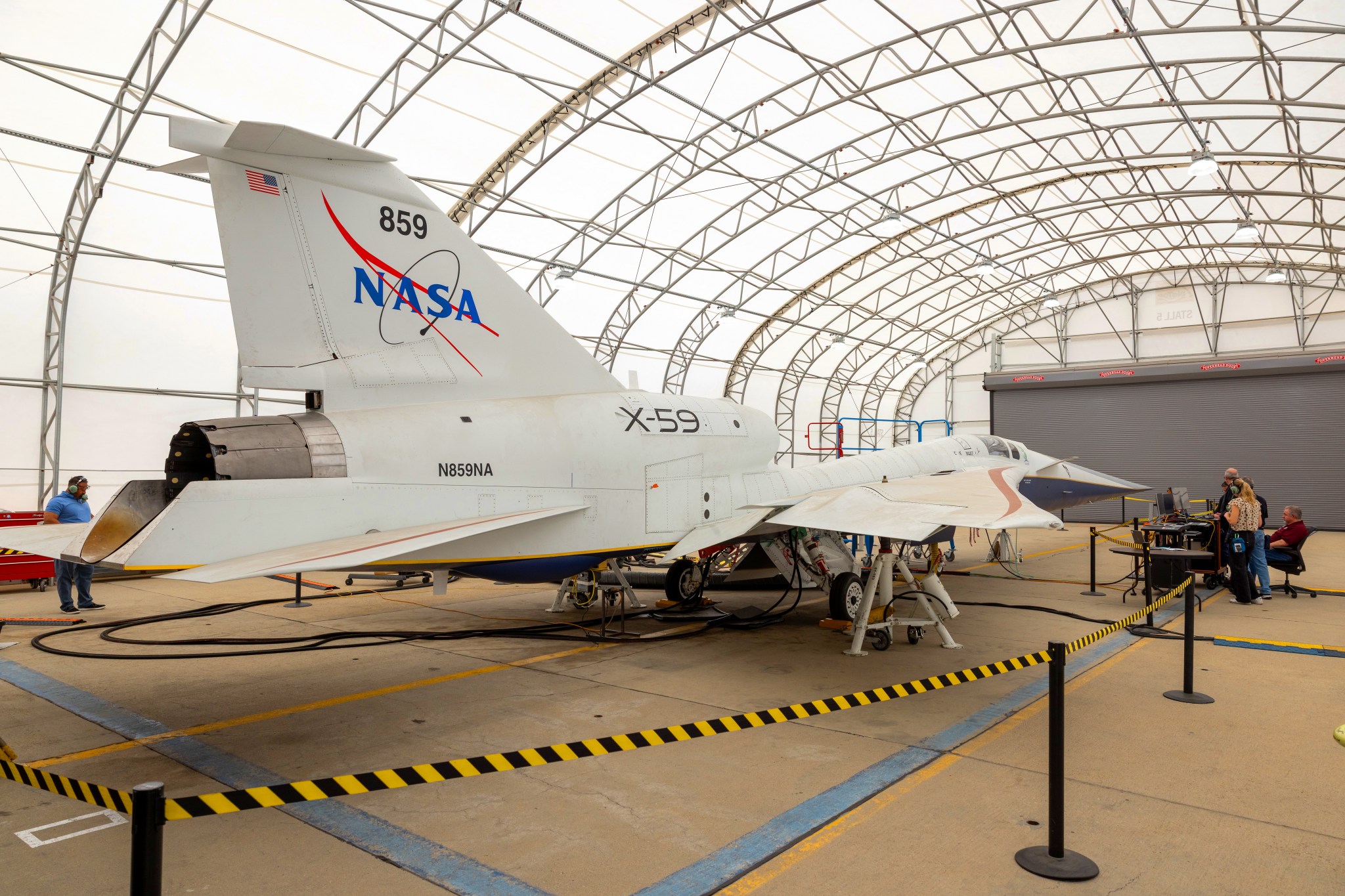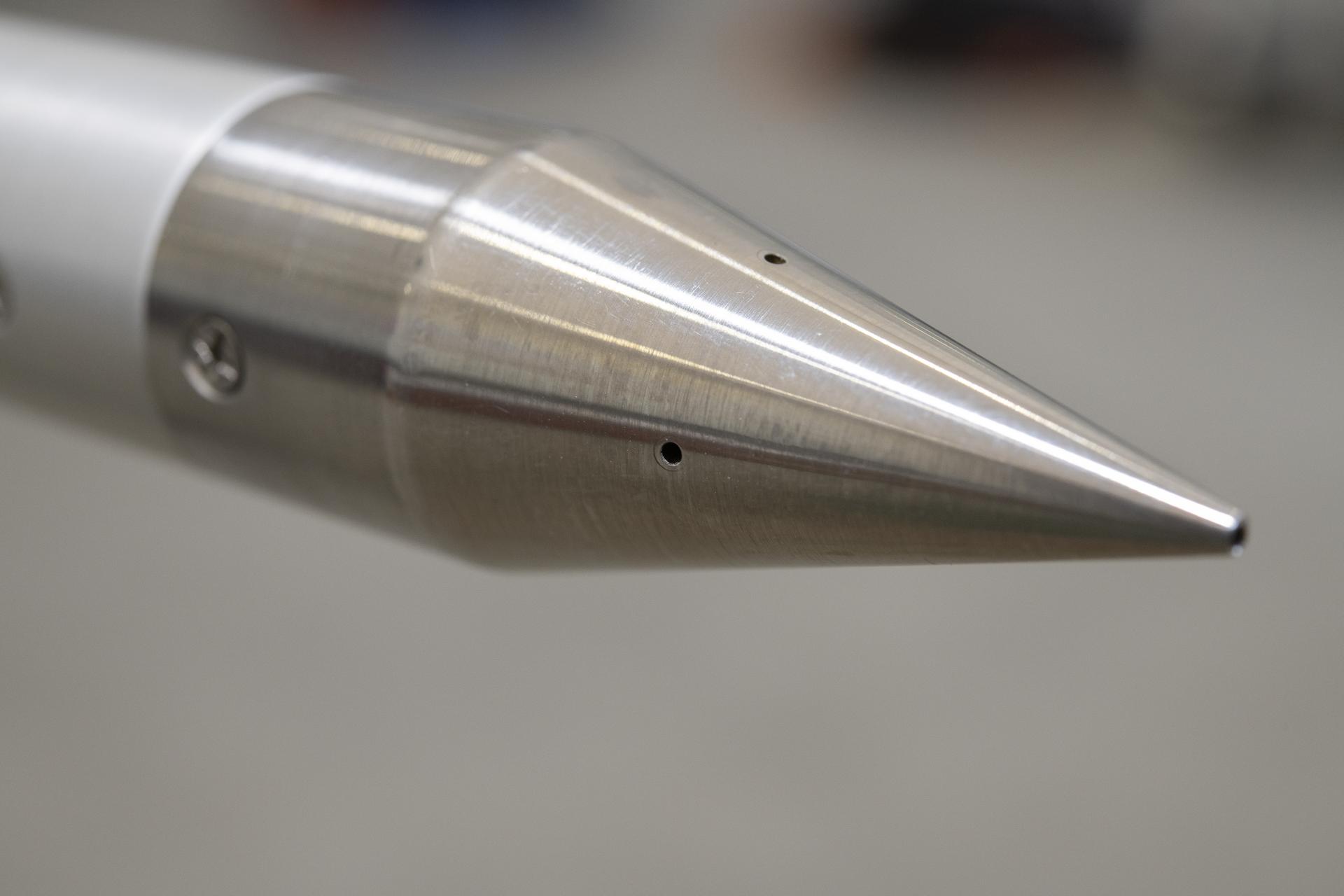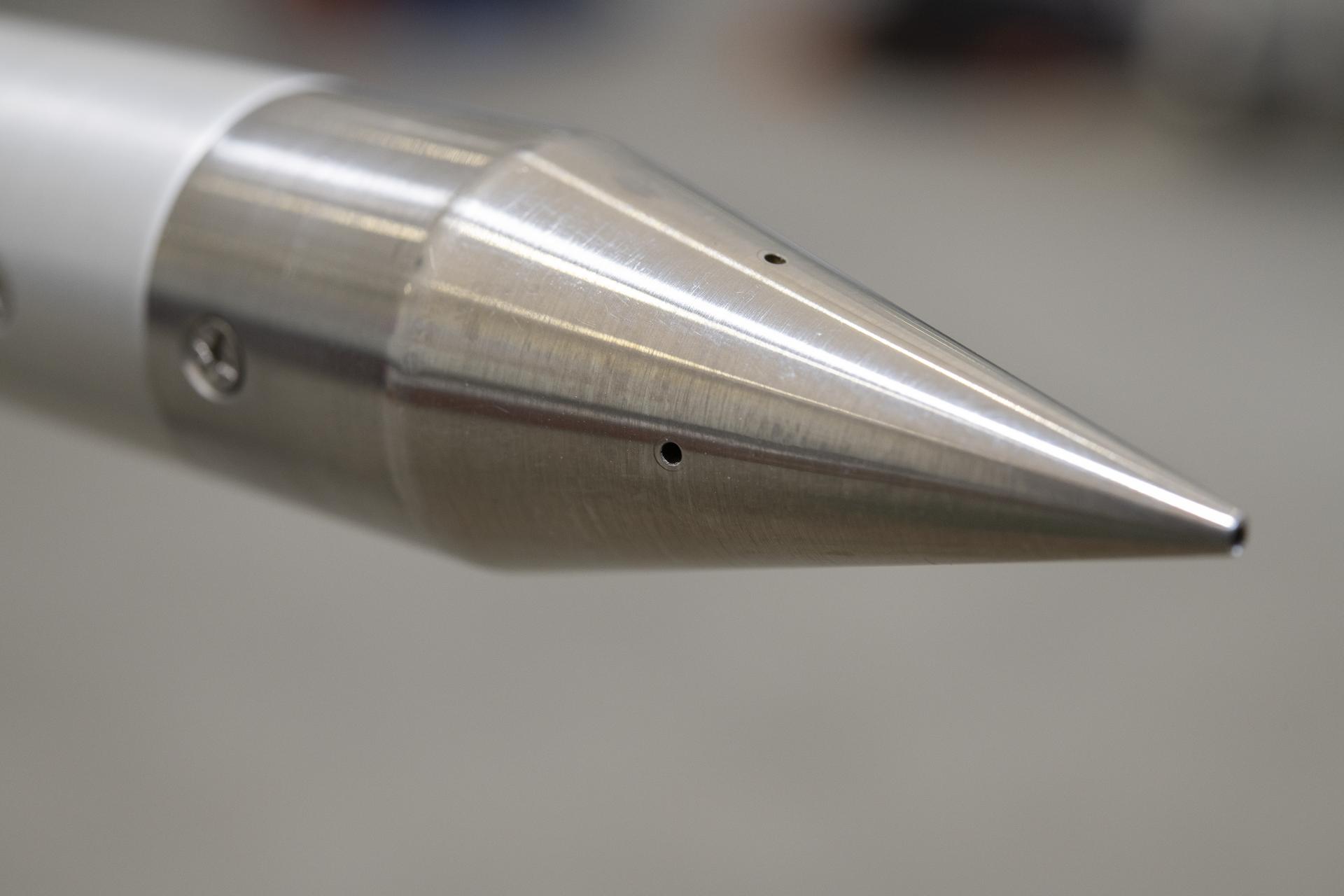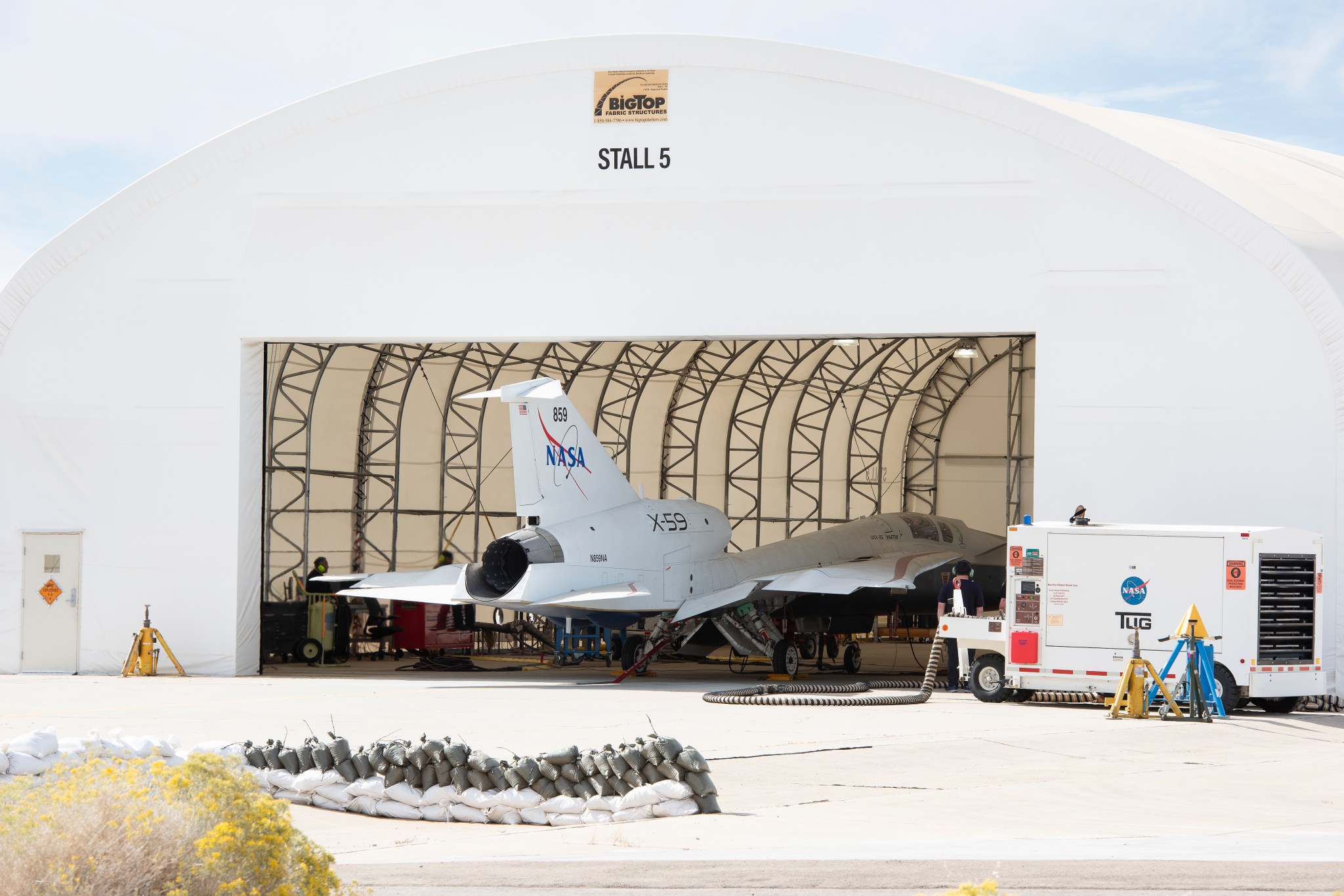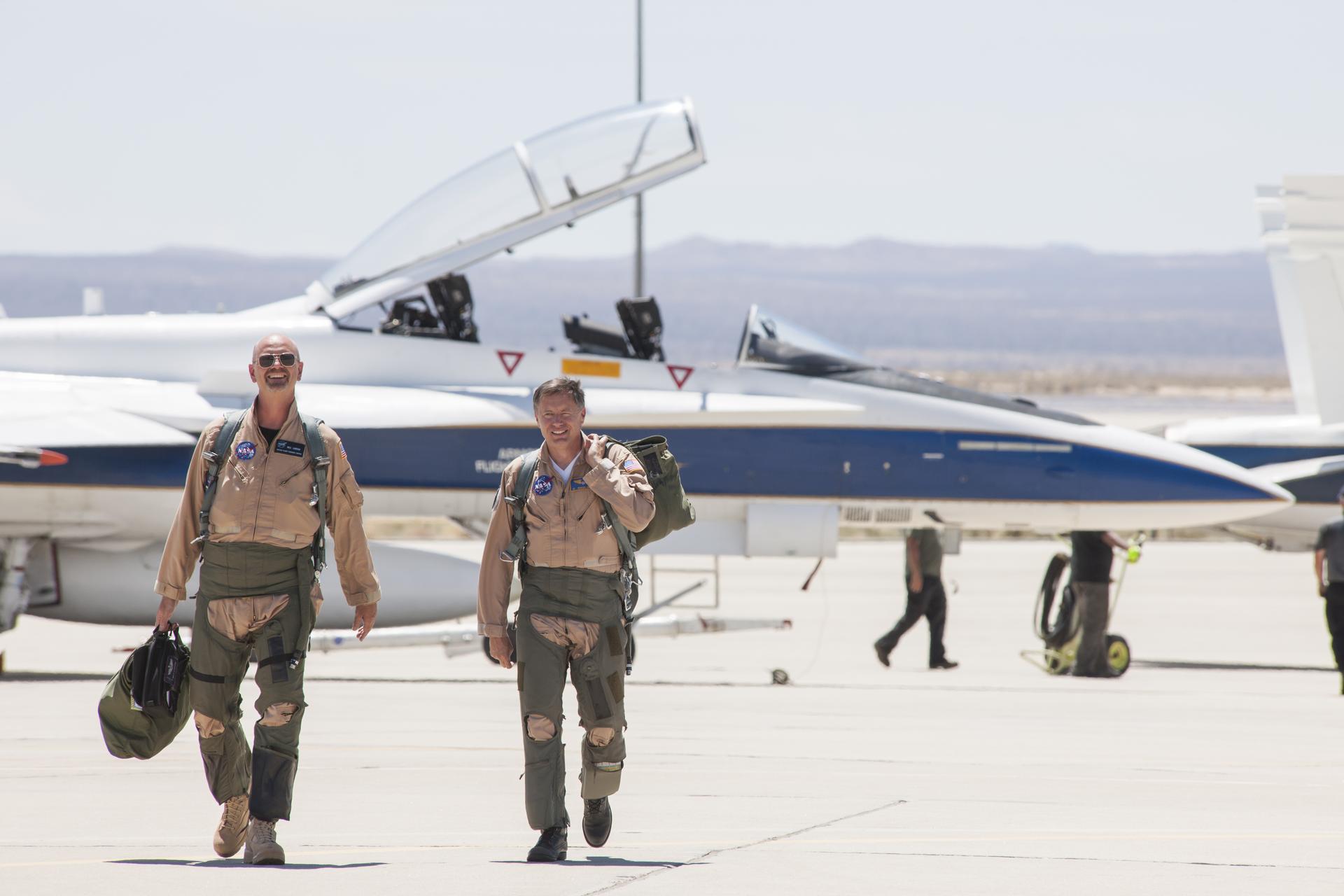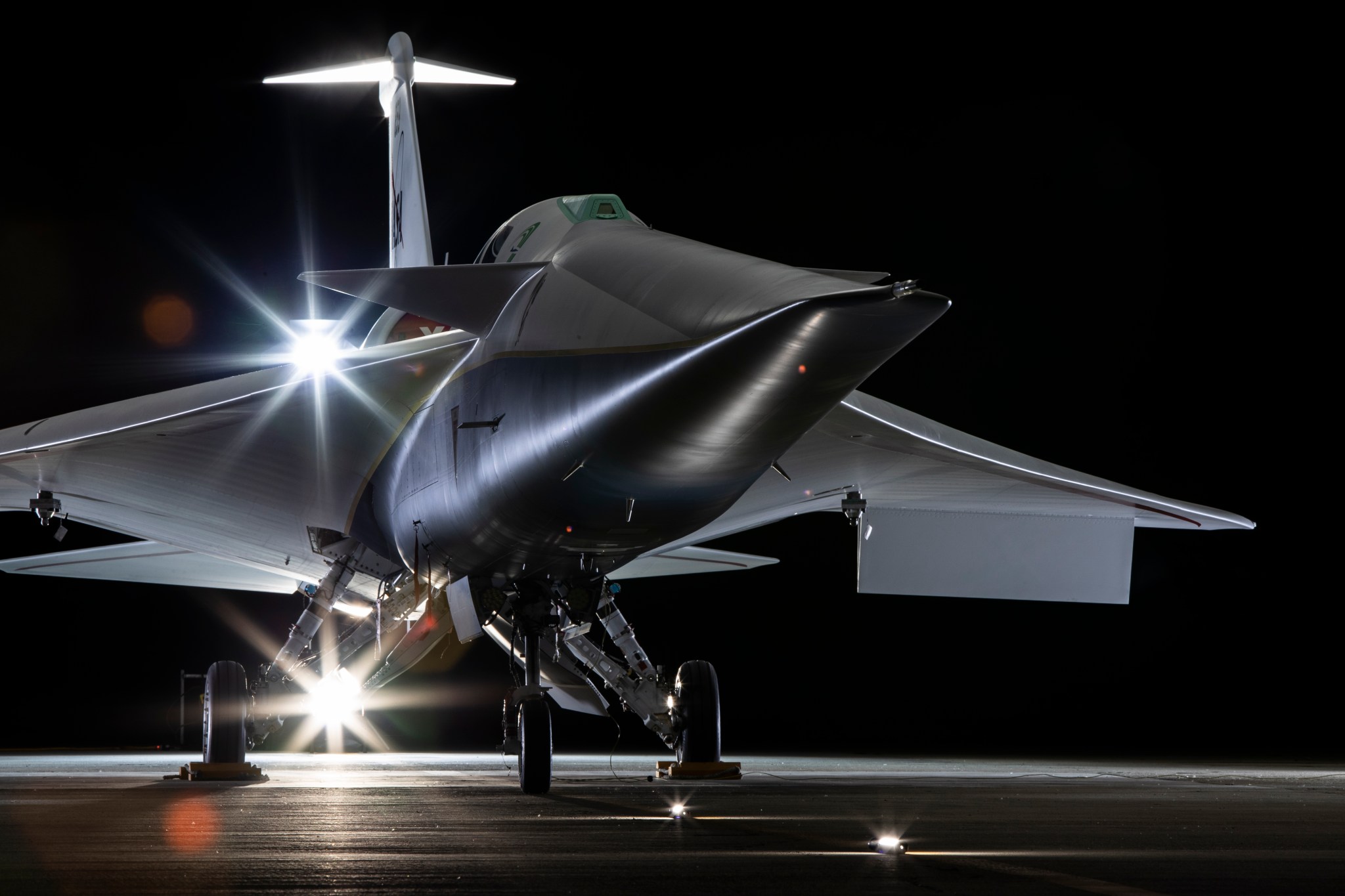5 min read Preparations for Next Moonwalk Simulations Underway (and Underwater) NASA’s X-59 quiet supersonic research aircraft is seen during its “aluminum bird” systems testing at Lockheed Martin’s Skunk Works facility in Palmdale, California. The test verified how the aircraft’s hardware and software work together, responding to pilot inputs and handling injected system failures. Lockheed Martin / Garry Tice NASA’s X-59 quiet supersonic research aircraft successfully completed a critical series of tests in which the airplane was put through its paces for cruising high above the California desert – all…
Read MoreTag: Quesst (X-59)
NASA’s X-59 Completes ‘Cruise Control’ Engine Speed Hold Test
2 min read Preparations for Next Moonwalk Simulations Underway (and Underwater) NASA’s X-59 quiet supersonic research aircraft sits on a ramp at Lockheed Martin Skunk Works in Palmdale, California, during sunset. The one-of-a-kind aircraft is powered by a General Electric F414 engine, a variant of the engines used on F/A-18 fighter jets. The engine is mounted above the fuselage to reduce the number of shockwaves that reach the ground. The X-59 is the centerpiece of NASA’s Quesst mission, which aims to demonstrate quiet supersonic flight and enable future commercial travel…
Read MoreNASA’s X-59 Completes Electromagnetic Testing
3 min read Preparations for Next Moonwalk Simulations Underway (and Underwater) NASA’s F-15D research aircraft is positioned adjacent to the X-59 during electromagnetic compatibility testing at U.S. Air Force Plant 42 in Palmdale, California. Researchers activated the F-15D’s radar, C-band transponder, and radios at different distances from the X-59 to evaluate potential electromagnetic interference with the aircraft’s flight-critical systems, ensuring the X-59 can operate safely with other aircraft. These tests showed that the aircraft’s integration is maturing and cleared a major hurdle that moves it one step closer to first…
Read More2024: NASA Armstrong Prepares for Future Innovative Research Efforts
4 min read Preparations for Next Moonwalk Simulations Underway (and Underwater) NASA/Quincy Eggert NASA’s Armstrong Flight Research Center in Edwards, California, is preparing today for tomorrow’s mission. Supersonic flight, next generation aircraft, advanced air mobility, climate changes, human exploration of space, and the next innovation are just some of the topics our researchers, engineers, and mission support teams focused on in 2024. NASA Armstrong began 2024 with the public debut of the X-59 quiet supersonic research aircraft. Through the unique design of the X-59, NASA aims to reduce the sonic…
Read MoreLa NASA probará tecnología para medir las singulares ondas de choque del X-59
4 min read Preparations for Next Moonwalk Simulations Underway (and Underwater) Un detalle de la sonda de detección de impactos de la NASA resalta sus puertos de presión, diseñados para medir los cambios de presión del aire durante el vuelo supersónico. La sonda se montará en el F-15B de la NASA para realizar vuelos de calibración, validando su capacidad de medir las ondas de choque generadas por el X-59 para la misión Quesst de la NASA. NASA/Lauren Hughes Un F-15B de la NASA realiza un vuelo de calibración de una…
Read MoreNASA to Test Technology for X-59’s Unique Shock Wave Measurements
3 min read Preparations for Next Moonwalk Simulations Underway (and Underwater) A close-up of NASA’s shock-sensing probe highlights its pressure ports, designed to measure air pressure changes during supersonic flight. The probe will be mounted on NASA’s F-15B Aeronautics Research Test Bed for calibration flights, validating its ability to measure shock waves generated by the X 59 as part of NASA’s Quesst mission to provide data on quiet supersonic flight. NASA/Lauren Hughes NASA’s F-15B Aeronautics Research Test Bed performs a calibration flight of the shock-sensing probe over Edwards, California, on…
Read MoreX-59’s Engine Started for Testing
NASA/Carla Thomas NASA’s X-59 quiet supersonic research aircraft sits in its run stall at Lockheed Martin’s Skunk Works facility in Palmdale, California, in this image from Oct. 30, 2024. The engine-run tests, which began Oct. 30, allow the X-59 team to verify the aircraft’s systems are working together while powered by its own engine. In previous tests, the X-59 used external sources for power. The engine-run tests set the stage for the next phase of the experimental aircraft’s progress toward flight. After the engine runs, the X-59 team will move…
Read MoreNASA Pilots Add Perspective to Research
4 min read Preparations for Next Moonwalk Simulations Underway (and Underwater) NASA pilots Nils Larson and Wayne Ringelberg head for a mission debrief after flying a NASA F/A-18 at Mach 1.38 to create sonic booms as part of the Sonic Booms in Atmospheric Turbulence flight series at NASA’s Armstrong Flight Research Center in California, to study sonic boom signatures with and without the element of atmospheric turbulence. NASA/Lauren Hughes NASA research pilots are experts on how to achieve the right flight-test conditions for experiments and the tools needed for successful…
Read MoreNASA Grants to Engage Students in Quiet Supersonic Community Overflight
NASA’s X-59 quiet supersonic research aircraft is dramatically lit for a “glamour shot,” captured before its Jan. 12, 2024, rollout at Lockheed Martin’s Skunk Works facility in Palmdale where the airplane was constructed. Credit: Lockheed Martin / Michael Jackson NASA has issued new grants to five universities to help develop education plans for the community overflight phase of the agency’s Quesst mission, which aims to demonstrate the possibility of supersonic flight without the typical loud sonic booms. The new grants, from NASA’s Office of STEM Engagement, will provide each university…
Read MoreNASA Instruments Will Listen for Supersonic X-59’s Quiet ‘Thump’
4 min read Preparations for Next Moonwalk Simulations Underway (and Underwater) NASA recently completed a series of tests to reduce risks prior to Phase 2 of its Quesst mission, which will test the ability of the X-59 experimental aircraft to make sonic booms quieter. Credits: NASA/Steve Parcel NASA’s X-59 experimental aircraft is unique – it’s designed to fly faster than the speed of sound, but without causing a loud sonic boom. To confirm the X-59’s ability to fly supersonic while only producing quiet sonic “thumps,” NASA needs to be able…
Read More